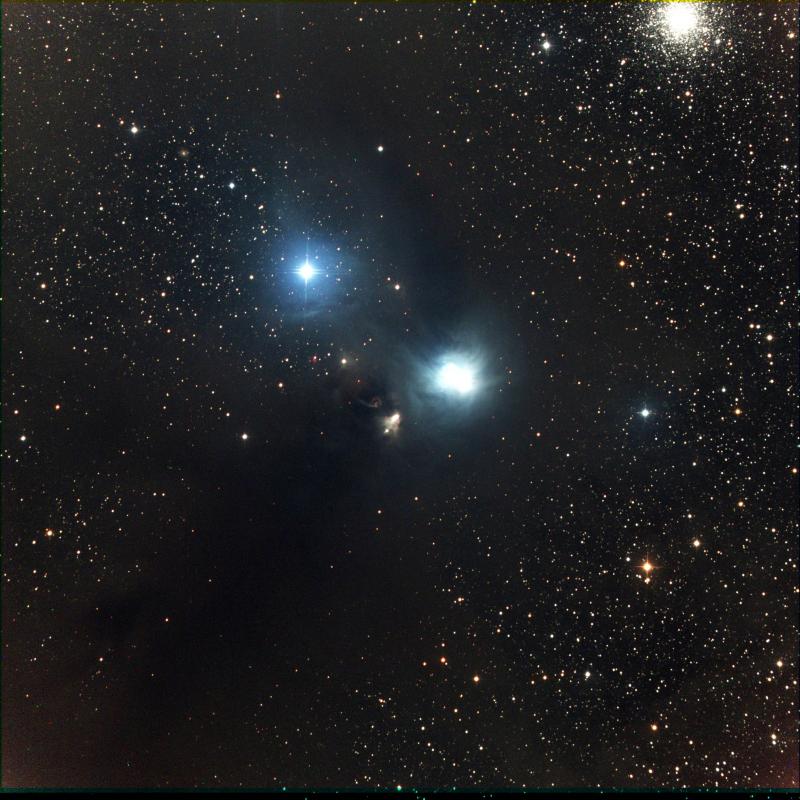Corona Australis nebula
| Common name | Designation | Constellation | Star | RA | Dec |
| Corona Australis nebula | NGC 6729 | Corona Aust. | R & T CrA | 19hr 01m 54s | -36° 57’ 12” |
Corona Australis (NGC 6729) was the third variable nebula to be found and has been observed for over a century. The variability of the two YSOs illuminating it, R and T CrA were discovered from Athens by Julius Schmidt. The nebula was a regular target of Harold Knox-Shaw from Helwan observatory in Egypt before and during the First World War and only its southerly declination has prevented it being better known. It lies just south of Sagittarius so does not rise from northern Europe. Nevertheless, the availability of remote telescopes has made possible regular observation. Terry Evans has obtained an exceptional series of images over the past couple of years. These have been studied in detail by Grant Privett and analysis should be featured in a forthcoming paper in the JBAA.


These have been studied in detail by Terry Evans and Grant Privett. and an analysis presented in a paper in the JBAA (see J. Br. Astron. Assoc., 133(5), 2023)
| The British Astronomical Association supports amateur astronomers around the UK and the rest of the world. Find out more about the BAA or join us. |
